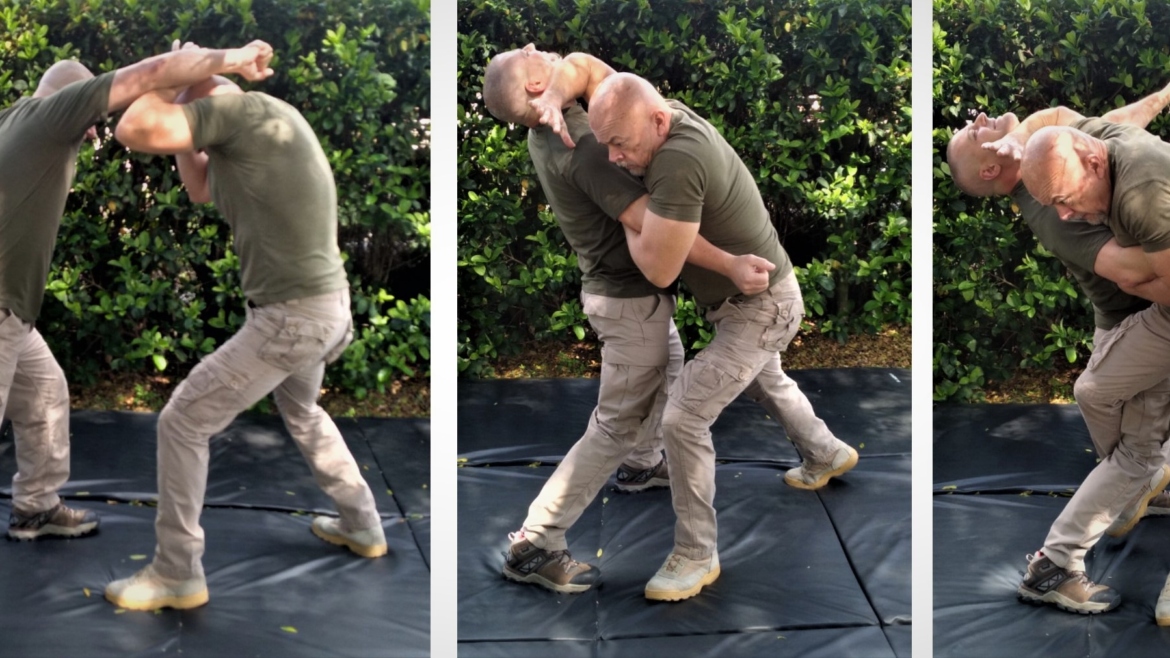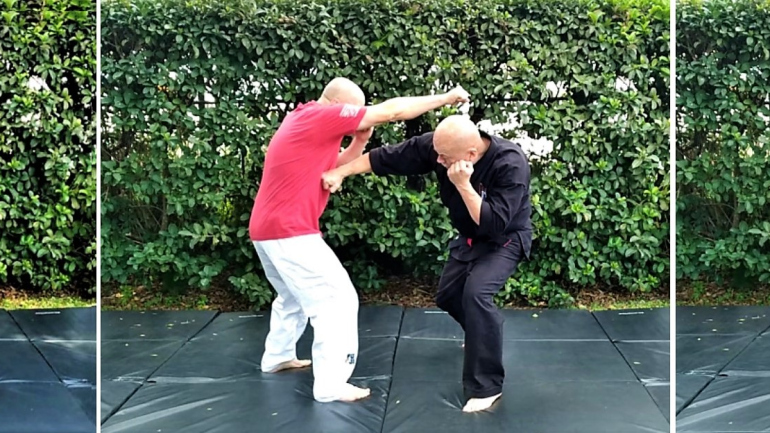One of the most glaring differences between the sport judo and Combat Judo (the use of judo in the military for combat) is the striking element. In sport the only way to off balance you opponent is thru grappling, pushing and pulling to off balance him to set up the throw. In military field manuals strikes precede all throws or takedowns. The strikes serve either to off balance the opponent or stun him in turn setting up the takedown.
One of the most versatile throws in combat judo is the cross hock take down. This takedown/throw can be found in many combatives field training manuals and militayr combatives programs from WWI to the present. Most liken the cross-hock takedown to a variation of Osoto Gari (Major Outside Reap) however there are some very major differences. Shown in a agressive charging fashion, the cross hock takedown is by no means a trip but rather a full fledged throw with the means of putting the would be attacker directly onto his head. It is not a trip but a high leg sweep reaping the attackers leg up high into the air….the higher the reaping leg goes, the higher and more impactful the throw. The opponent’s leg is swept up high as you DRIVE his shoulders into the ground.
 (1.) Start the cross – hock takedown from either a fighting stance or non – violent posture. Push off with the right foot and step diagonally to the outside of your opponent’s right foot with you left foot. Simultaneously STRIKE both of your opponent’s shoulders with the heels of both of your hands grab the clothing at the area struck. The blow should be delivered hard enough to knock the opponent off balance.
(1.) Start the cross – hock takedown from either a fighting stance or non – violent posture. Push off with the right foot and step diagonally to the outside of your opponent’s right foot with you left foot. Simultaneously STRIKE both of your opponent’s shoulders with the heels of both of your hands grab the clothing at the area struck. The blow should be delivered hard enough to knock the opponent off balance.
(2.) Move forward shifting your weight to the left foot and leg, maintaining the hold on his shoulder or shoulders. As you shift the weight bring your right knee forward and up in between your left leg and the outside of your opponent’s right leg. Your right thigh should be raised until it is parallel with the ground.
(3.) Swing your right leg downward and back without letting your right foot touch the ground sweep your opponent’s leg upward. The back of your calf should make contact with the back of his calf as you sweep his leg high and take him to the ground.
The objective of the cross-hock takedown is to approach the opponent from the front and take him down as quickly as possible. The cross-hock takedown is best used when the opponent is moving in on you or is facing you in a upright position. When executed from O’Neill’s side forward or bladed off stance this technique takes on even a greater versatility than any one description can allude to. It can literally be executed effectively from multiple angles taking the opponent down either to his back, diagonally toward his rear, to either side or to the opponent’s front. The true beauty of this technique and most importantly in the true combative sense is that it’s simple in execution, a total primal gross motor movement. This alone makes it an unabashedly primary tool in one’s combative arsenal.

The cross hock takedown can be used; 1. Preemptively, wedging in and taking over the opponent’s centerline completely or 2. Reactionary, covering, crashing and entering to take over the centerline blowing right thru your opponent and completely disrupting his balance. Seeing this versatility, the name cross hock takedown really does this technique no justice in the description of its various capabilities or effectiveness.
How to train
The throws are broken down into and practiced in three phases practice each phase delibarately.
(1) Step in, strike opponent’s shoulder, grasp his clothing and move him to further off balance.
(2) Move forward continuing to hold clothing, shift weight and swing your knee upward and hold.
(3) Swing raised knee downward and back. Hit the back of the opponent’s calf with the back of your calf continue the backward motion and sweep the opponents leg and drive his shoulders to the ground.
Common mistakes:
1.) Axis not foward – your axis should never be backwards.
2.) going in knees not bent look to have a good athletic posture with axis forward as if taking off to run.
3.) Not stepping deep enough with lead foot – this causes you to reach to far with the sweeping leg and causing you to lean backwards.
Interested in more information about Combat Judo techniques and the history of Combat judo in the military. Real Combat Judo and Combat Judo to Kajukenbo by Barron Shepherd are now available in ebook format for 9.99 usd each.



